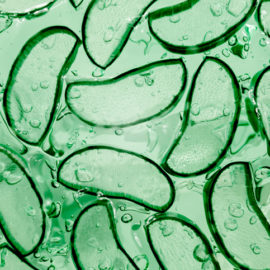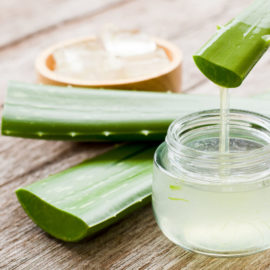Calming, natural ingredients such as the aloe barbadensis leaf extract stand out as the right ingredients for today’s consumers. The coronavirus crisis is likely to have long-term effects on consumer behavior. One fixture is likely to be the face mask: according to Mintel’s COVID-19 US Tracker conducted between May 28 and June 4, 2020, 71% of Americans are wearing a face mask in public due to COVID-19. With this new social norm comes new market trends, including the demand for targeted skin care products. For example, those with dry, sensitive skin often find that sustained mask usage irritates their skin. Here, we unpack why aloe barbadensis leaf extract is the right choice for targeting irritated skin.
Content
Why COVID-19 has fuelled the demand for clean beauty
Consumers have been concerned about product safety for some time. The clean beauty movement has boosted demand for natural or organic products, which is set to accelerate due to the COVID-19 pandemic. Consumers want to be certain products are healthy, resulting in an emphasis on free-from claims in the beauty and personal care space. In the wake of the pandemic, consumers will demand yet more reassurance: ingredient transparency will be critical as consumers seek the safest, healthiest possible products.
This is especially the case as face mask usage creates a new set of skin care concerns for those looking for products targeted for sensible skin. Wearing a face mask in public for extended periods can cause discomfort and irritation, triggering a potential uptick in demand for soothing, healing formulas. Moreover, during the pandemic, there has been a distinct emphasis on avoiding touching the face; thus, “touchless” spray and stick formulas are gaining popularity. There is also the potential for an increased demand for products with anti-bacterial claims and naturally hygienic associations. All these factors contribute to a new landscape for personal care after a global pandemic. This is where a time-honored soothing favorite could come to the fore: aloe barbadensis leaf extract.
What is aloe barbadensis leaf extract? Is it safe?
Aloe barbadensis, or aloe vera, has long been prized for its healing properties. First used by ancient Sumerians, aloe vera’s potent soothing power has been used to calm irritation as severe as burns. Further to this, it’s known to have immunomodulatory, anti-inflammatory, antioxidant, anti-allergic, and even anti-diabetic agents. Most of this extract’s healing potential is attributed to polysaccharides present in the leaves’ gel.
These potent properties have been substantiated by research. A study conducted in Pretoria, South Africa, found that glycoprotein isolated from aloe vera showed an increase in cell migration and accelerated wound healing in the human keratinocyte monolayer. In vitro, aloe vera also stimulated epidermal tissue formation as well as a marked increase in the proliferation of markers on an immunological level.
Aloe barbadensis leaf extract: how to take on dryness and irritation, clean and touch-free
The evidence is clear: aloe barbadensis leaf extract harbors many of the properties that consumers seek in a post-pandemic world. With powerful soothing, healing properties that respond to the new skin care concerns associated with sustained mask usage, aloe vera is set to be a key trend. Plus, the active lends itself well to ‘touchless’ beauty, as it is easily incorporated into refreshing sprays or intensive stick treatments.
In response to the healing beauty trend, Provital developed Aloe Vera Gel Eco. This deeply hydrating active is water-soluble, making it perfect for spray formulas. The ingredient’s potent concentration of aloe vera is ideal for sensitive skin, gently calming irritated areas and reducing inflammation. Plus, this active is COSMOS organic-certified, ensuring complete transparency around sourcing and safety – meeting key consumer demand in the market landscape of the ‘new normal’.
No comments yet
There are no comments on this post yet.





Leave a comment